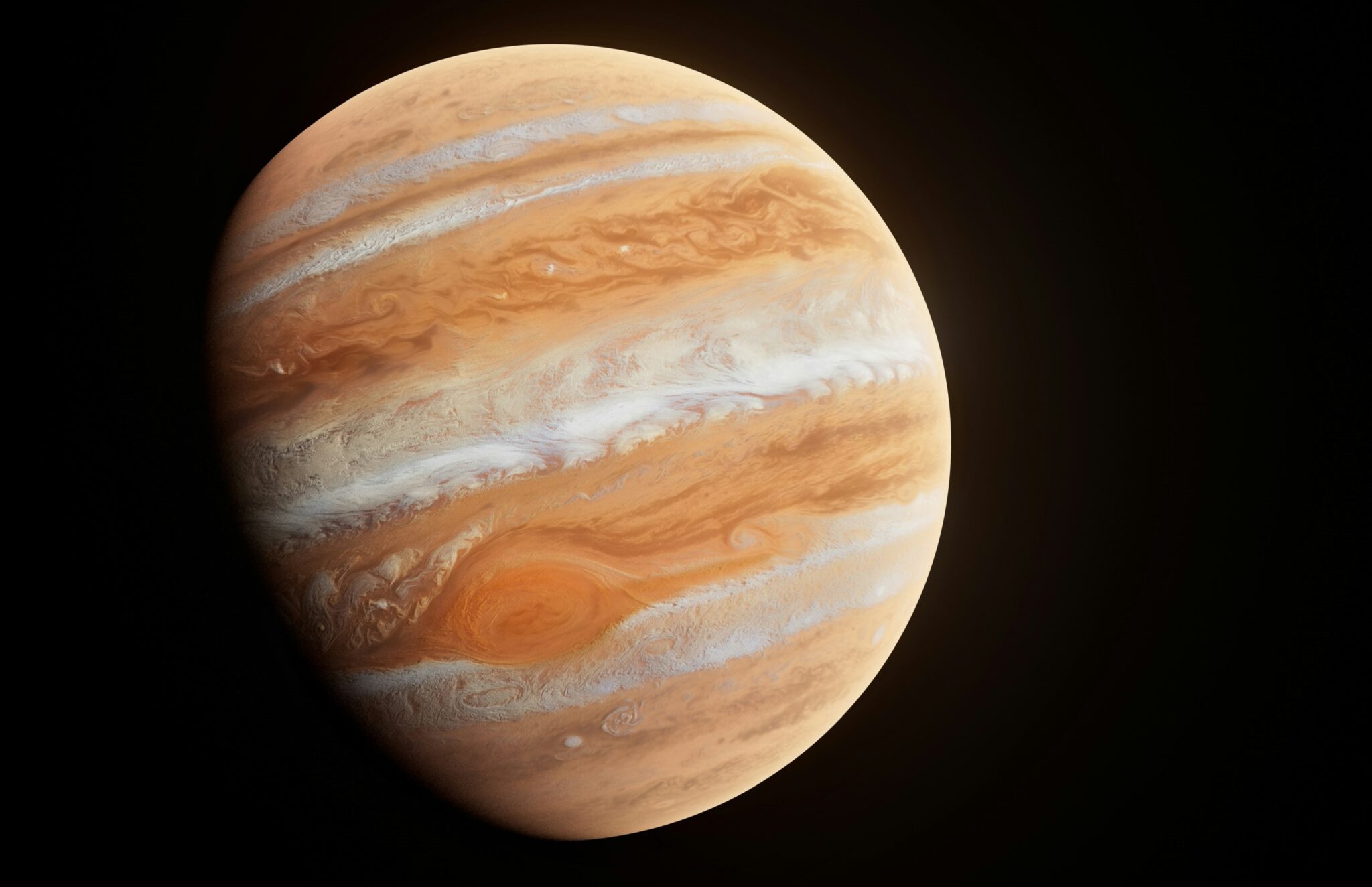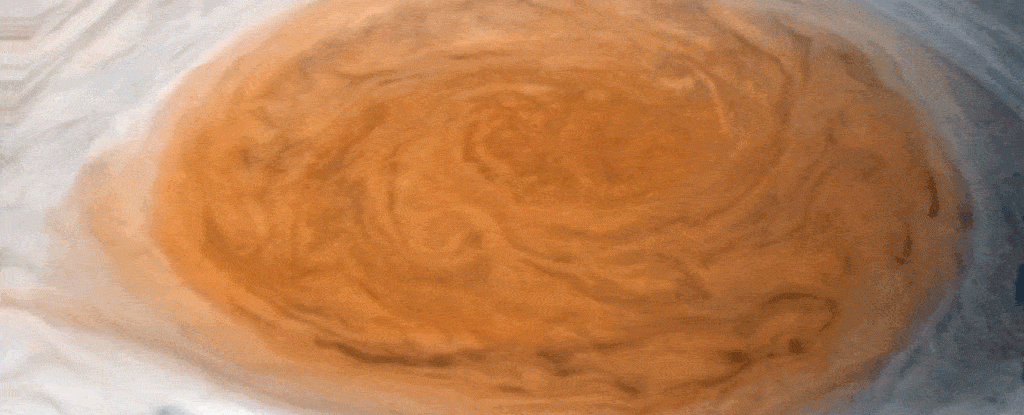The Great Red Spot on Jupiter is a huge storm that has been around for centuries. This giant anticyclone, larger than Earth, is spinning at 680 km/h. Since the first accurate records in 1831, the Great Red Spot has shrunk considerably. It was once much larger, but it has gradually decreased and continues that trend.

Scientists have found that the Great Red Spot is maintained by absorbing smaller storms. Without these storms, it would not be able to maintain its size.
Astronomy doctoral student Caleb Keaveney of Yale University says that through numerical modeling, it has been possible to understand how smaller storms feed the Great Red Spot, maintaining its size.
At the end of the XIX century, the diameter of the Great Red Spot was 39,000 km, and now it is 14,000 km. Earth, with a diameter of 12,742 kilometers, would still fit inside it. However, the size of Jupiter’s famous “eye” has shrunk considerably.
Weather on Earth and Jupiter
Jupiter is very different from Earth, and its weather is much more dynamic. However, fluids, particularly atmospheric gases, behave according to certain laws that can be studied using fluid dynamics. Using our understanding of atmospheric processes on Earth, Keaveney and his colleagues tried to understand what was happening on Jupiter.
A 2021 study found that the Great Red Spot absorbs the smaller storms it encounters, growing larger in the process. Researchers have used a similar phenomenon observed on Earth to create models of Jupiter’s atmosphere.

Long-lived high-pressure systems called heat domes can form in the jet streams of Earth’s atmosphere, where these streams slow to a complete standstill. These domes can contribute to heat waves and droughts by trapping warm temperatures underneath.
The duration of existence of these domes depends on anticyclones and other weather phenomena. Armed with this information, the researchers created a model of Jupiter’s atmosphere and the Great Red Spot by simulating the interaction between storms.
It turns out that when a smaller storm collides with the Great Red Spot, the latter maintains or even increases its size. The more such interactions there were, the greater the stability of the spot. The stronger storm also gave the Great Red Spot a bigger boost.
Studying Jupiter’s atmosphere will help us better understand how weather works on Earth.
“Our study has compelling implications for weather events on Earth. Interactions with nearby weather systems have been shown to sustain and amplify heat domes, which motivated our hypothesis that similar interactions on Jupiter could sustain the Great Red Spot. In validating that hypothesis, we provide additional support to this understanding of heat domes on Earth,” says Caleb Keaveney.
We previously reported on how astronomers were wrong about the age of Jupiter’s red spot.
According to sciencealert.com


